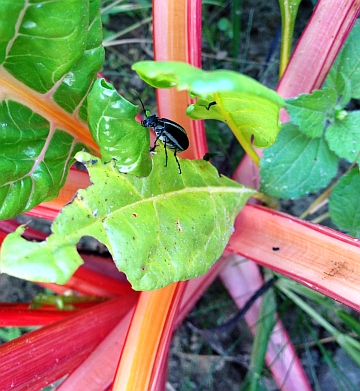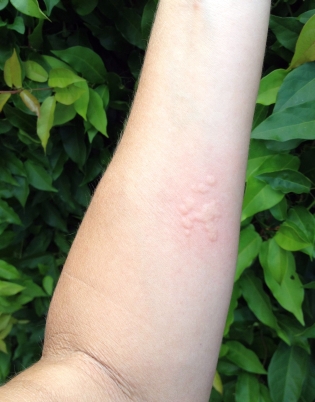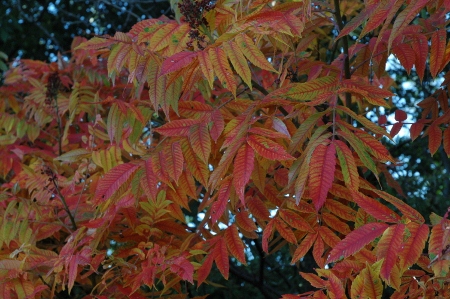
For a couple of weeks now we’ve had some animated discussions on introduced plants (invasive or otherwise) and native species. One of our commenters wondered whether many introduced invasives (those that take advantage of disturbed conditions) would eventually become controlled through succession (which in our part of the country means land dominated by trees and shrubs). And yes, if native species can get a foothold in an infested site, invasive species become less dominant.
To illustrate, I’ll take you on a virtual trip in our neighborhood’s pocket wetland. In 2000, this tiny triangle was dominated by reed canary grass (RCG) and had been for years; a few blackberries, cattails and nightshade were the only other obvious species.
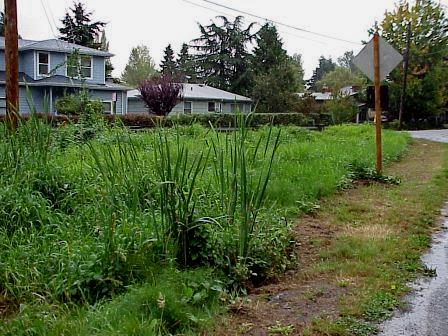
The triangle in 2000 looking west….
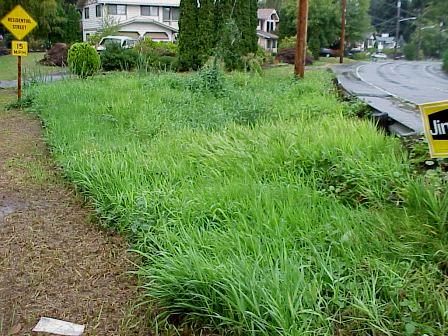
…and east
The city would mow the grass every so often, along with trees that my neighbors had futilely planted. We decided to take this on as a class project (this was when I was on faculty at University of Washington).
When we began to clear out the vegetation, we were stunned to realize that there was a creek running through what seemed to be a flat chunk of land.
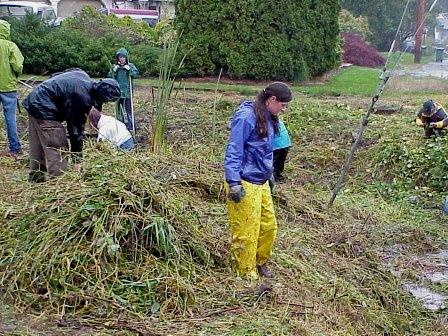
We cleared out as much RCG as possible and mulched the entire area (note that many restoration ecologists recommend taking out soil to a depth of 18″ to remove all the stolons). We knew the grass would come back, but our task was to jump start the system and get some native plants started. We installed a single Douglas fir and a single western hemlock (these are large trees at maturity), along with live stakes of native willow, dogwood and snowberry. We planted a few Oregon grape and other smaller shrubs.
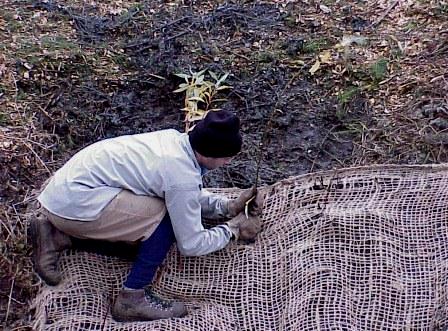
Live stakes planted through coir cloth (used to temporarily hold mulch in place).

The 2001 installation, looking east. The Douglas fir is next to the group, and the hemlock is in the foreground.
Over the next few years the RCG came back with a vengeance. We held occasional work parties to keep the grass at bay, but after I took a new position at WSU I no longer had the student work force that allowed me to keep this area partially controlled. It became a one-family project, and not one that we had a lot of time for.
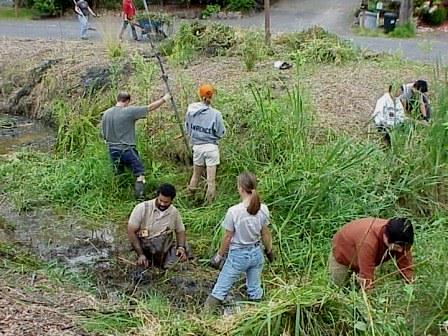
2003 work party dredging out the creek. You can’t see the natives we installed in 2001, but they’re in there.
Fortunately, nature took over for us. The willows we had planted grew like weeds, creating a canopy under which RCG doesn’t do so well.
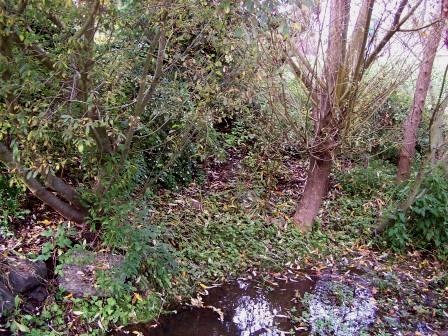
The Douglas fir and hemlock got established, as did the snowberry and one Oregon grape. For the most part, we were able to weed whack the RCG on the very steep slopes and keep the flatter areas covered with wood chips.
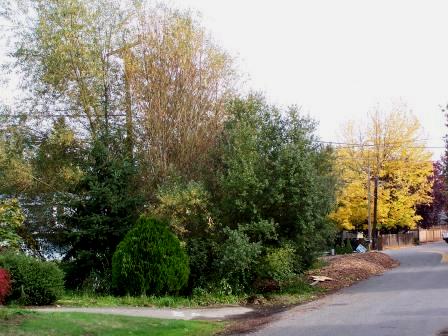
Restoration site in 2009, looking west…
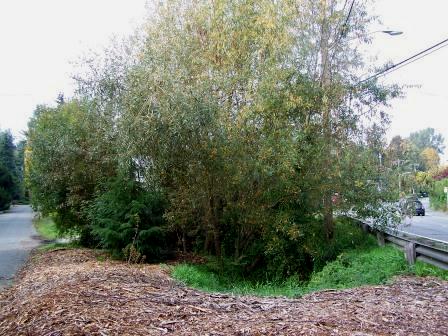
…and east.
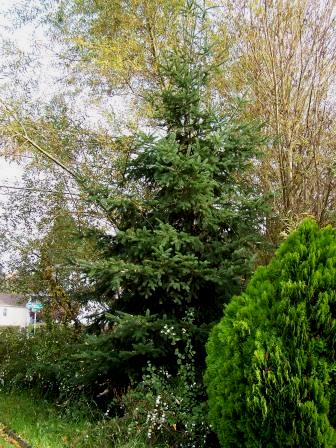
Eight year old Douglas fir…
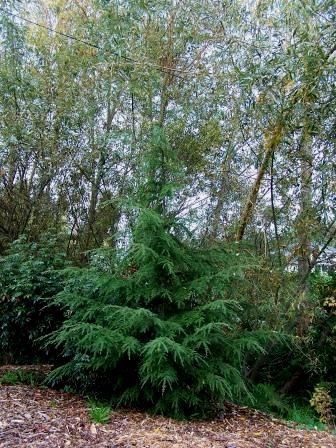
…western hemlock…
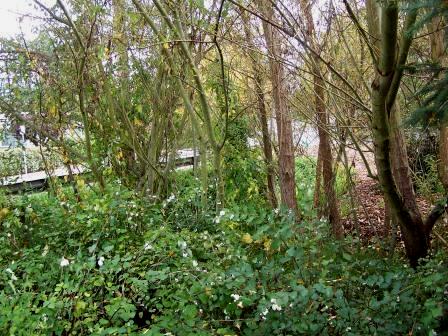
…and snowberry.
Will the RCG ever be completely gone? I doubt it; the seedbank must be incredible, and there are many other RCG colonies upstream. But it no longer dominates the landscape: it’s become assimilated. And that’s really the point: nature adapts.
[As an aside: I really don’t like the term “restoration.” We’re not taking landscapes back to some pristine original as the term implies. “Assisted succession” more accurately and realistically describes this process.]

